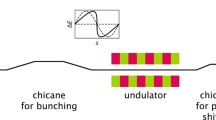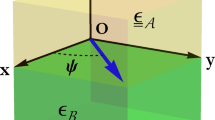Abstract
A SLOW wave structure suitable for an electron linear accelerator or a high-power travelling-wave tube can be obtained by loading a metal wave-guide with a dielectric, either in the form of a coaxial tube or a series of disks.
This is a preview of subscription content, access via your institution
Access options
Subscribe to this journal
Receive 51 print issues and online access
$199.00 per year
only $3.90 per issue
Buy this article
- Purchase on Springer Link
- Instant access to full article PDF
Prices may be subject to local taxes which are calculated during checkout
Similar content being viewed by others
References
Shersby-Harvie, R. B., Mullett, L. B., Walkinshaw, W., Bell, J. S., and Loach, B. G., Proc. Inst. Elec. Eng., B, 104, 273 (1957).
Walker, G. B., and West, N. D., Proc. Inst. Elect. Eng., C, 104, 381, No. 6 (1957).
Author information
Authors and Affiliations
Rights and permissions
About this article
Cite this article
WALKER, G., LEWIS, E. Vacuum Breakdown in Dielectric-loaded Wave-guides. Nature 181, 38–39 (1958). https://doi.org/10.1038/181038b0
Issue Date:
DOI: https://doi.org/10.1038/181038b0
This article is cited by
-
The multipactor effect in a linear electron accelerator
Il Nuovo Cimento (1958)
Comments
By submitting a comment you agree to abide by our Terms and Community Guidelines. If you find something abusive or that does not comply with our terms or guidelines please flag it as inappropriate.



